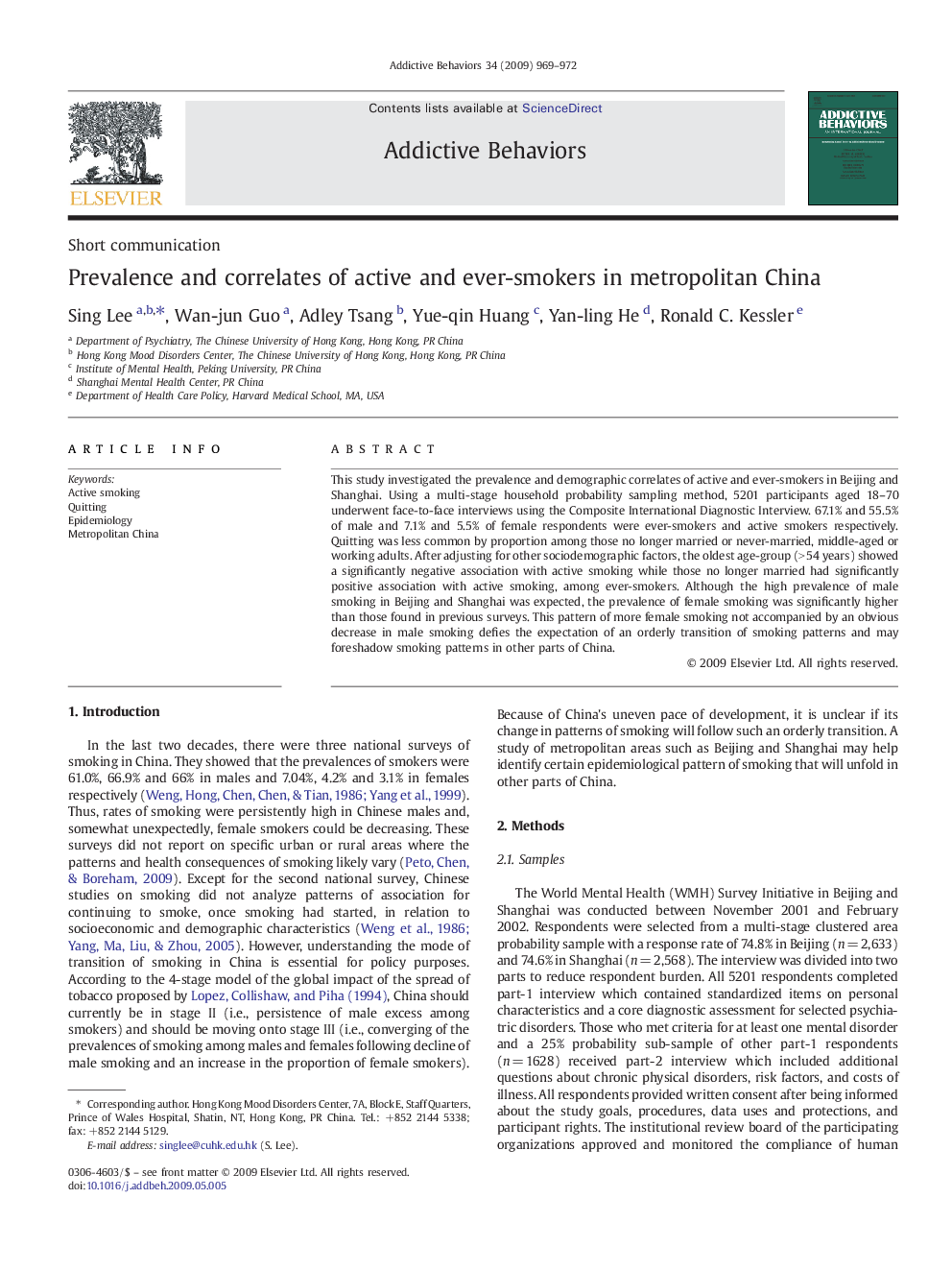| Article ID | Journal | Published Year | Pages | File Type |
|---|---|---|---|---|
| 900311 | Addictive Behaviors | 2009 | 4 Pages |
This study investigated the prevalence and demographic correlates of active and ever-smokers in Beijing and Shanghai. Using a multi-stage household probability sampling method, 5201 participants aged 18–70 underwent face-to-face interviews using the Composite International Diagnostic Interview. 67.1% and 55.5% of male and 7.1% and 5.5% of female respondents were ever-smokers and active smokers respectively. Quitting was less common by proportion among those no longer married or never-married, middle-aged or working adults. After adjusting for other sociodemographic factors, the oldest age-group (> 54 years) showed a significantly negative association with active smoking while those no longer married had significantly positive association with active smoking, among ever-smokers. Although the high prevalence of male smoking in Beijing and Shanghai was expected, the prevalence of female smoking was significantly higher than those found in previous surveys. This pattern of more female smoking not accompanied by an obvious decrease in male smoking defies the expectation of an orderly transition of smoking patterns and may foreshadow smoking patterns in other parts of China.
